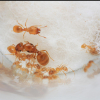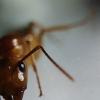This is it. A mega journal where I'll be talking about all of my Pheidole. And oh boy, there's a lot. This first post will be basically an introduction to every colony/queen, and future posts will act as updates for each.
Pheidole bicarinata
I got this colony with around 20 workers this April, and they've since exploded to have probably around 800-1000. It's hard to tell for sure, as they're in a bifuricated mini hearth (already meh visibility) and they've absolutely trashed it. Either way, they've got a great feeding response and are overall still a very solid colony.
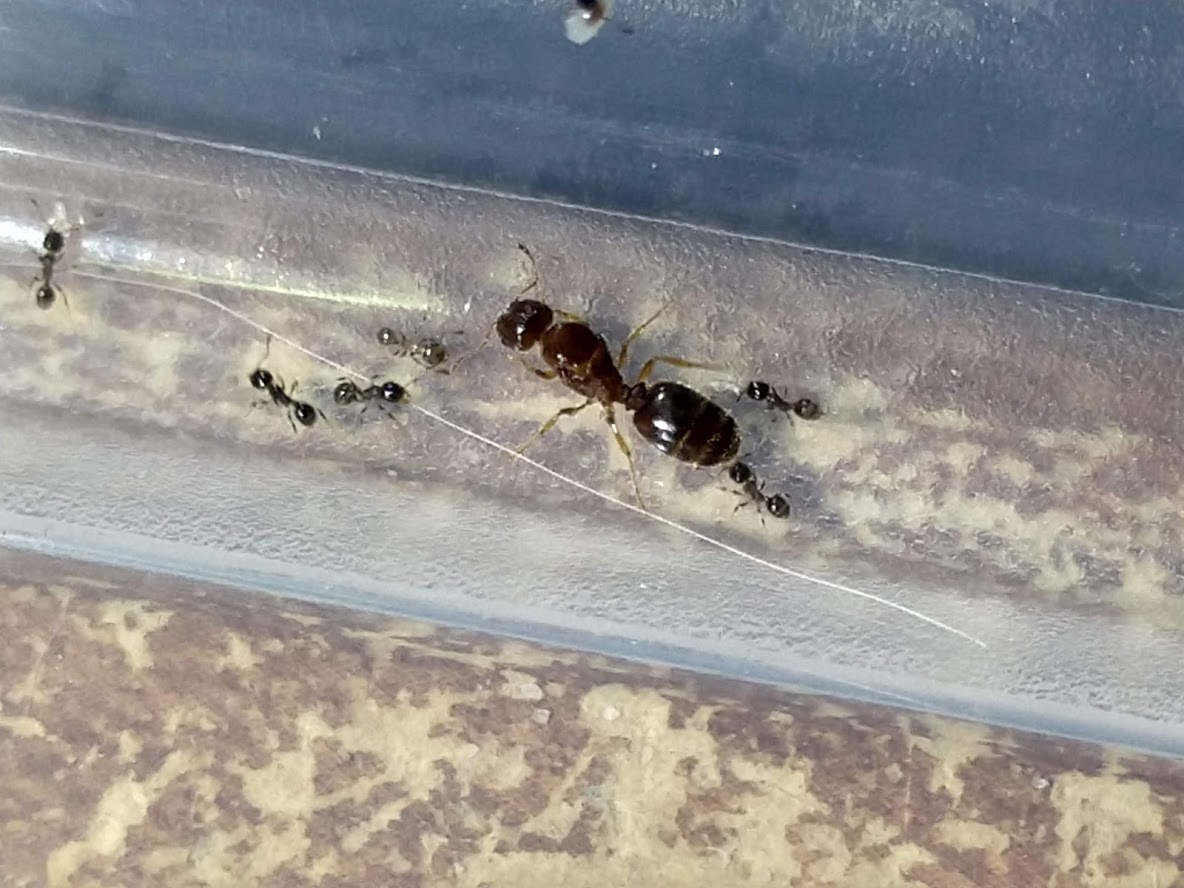
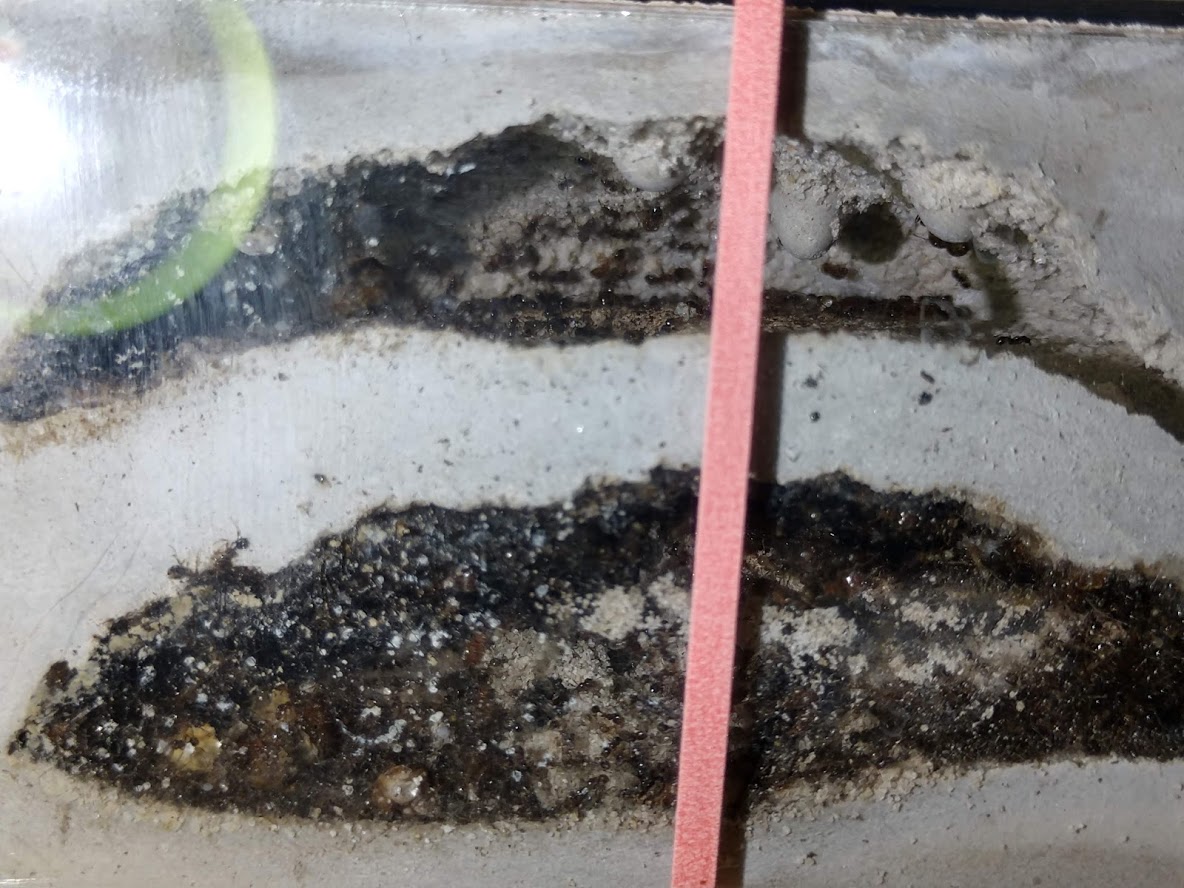
Pheidole micula
This colony is easily my favorite. I got them this March, when I found the queen under a rock with her nanitics and a good amount of brood. They are an absolutely tiny species, with the queen coming in at only ~4mm, and yet they manage to best even my bicarinata in growth rate. Their feeding response is unparalleled, and they are incredibly easy to keep. I was expecting them to cap at around 600-1000 workers based on the size of the queen, but they have absolutely smashed that number with no signs of stopping. I was planning on their THA Inception Chamber being their nest for life, but they are looking like they actually may need an upgrade. The pictures shown were taken just under 10 weeks apart:
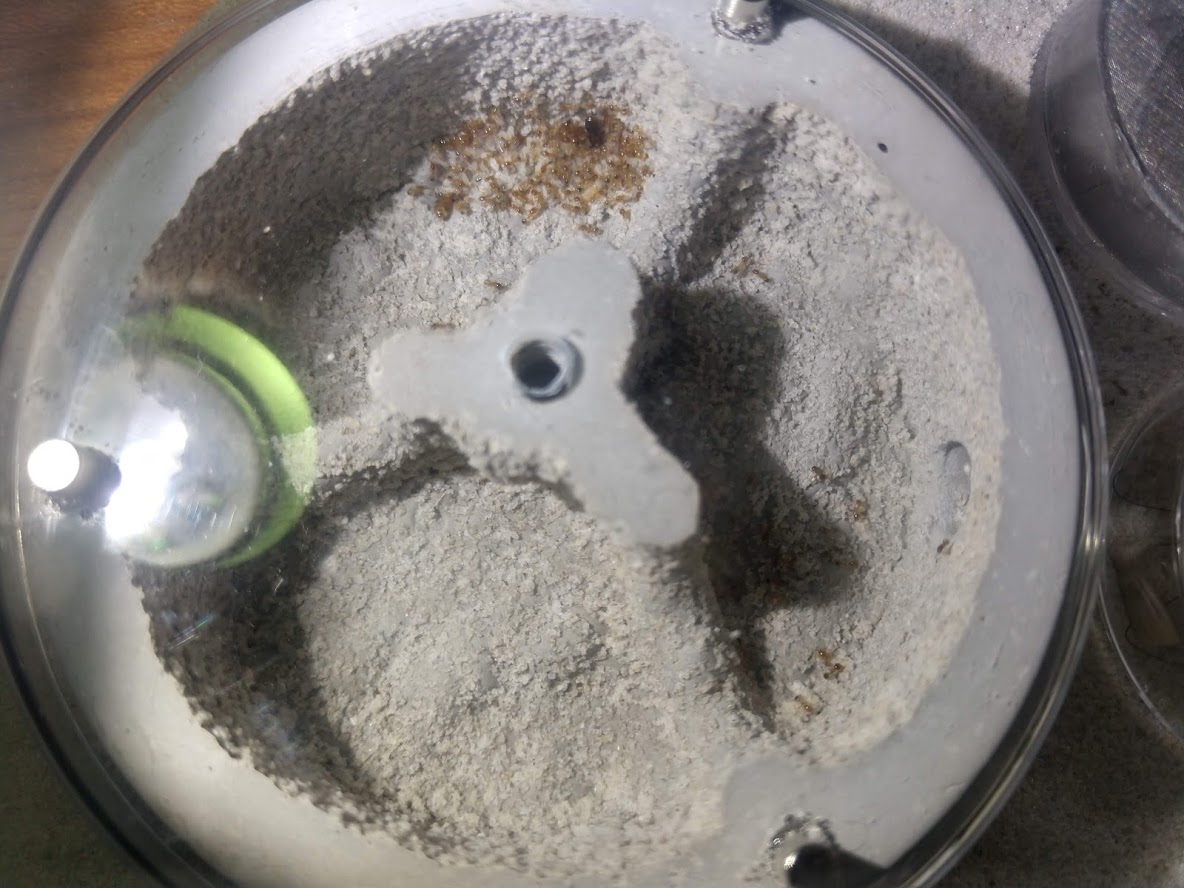
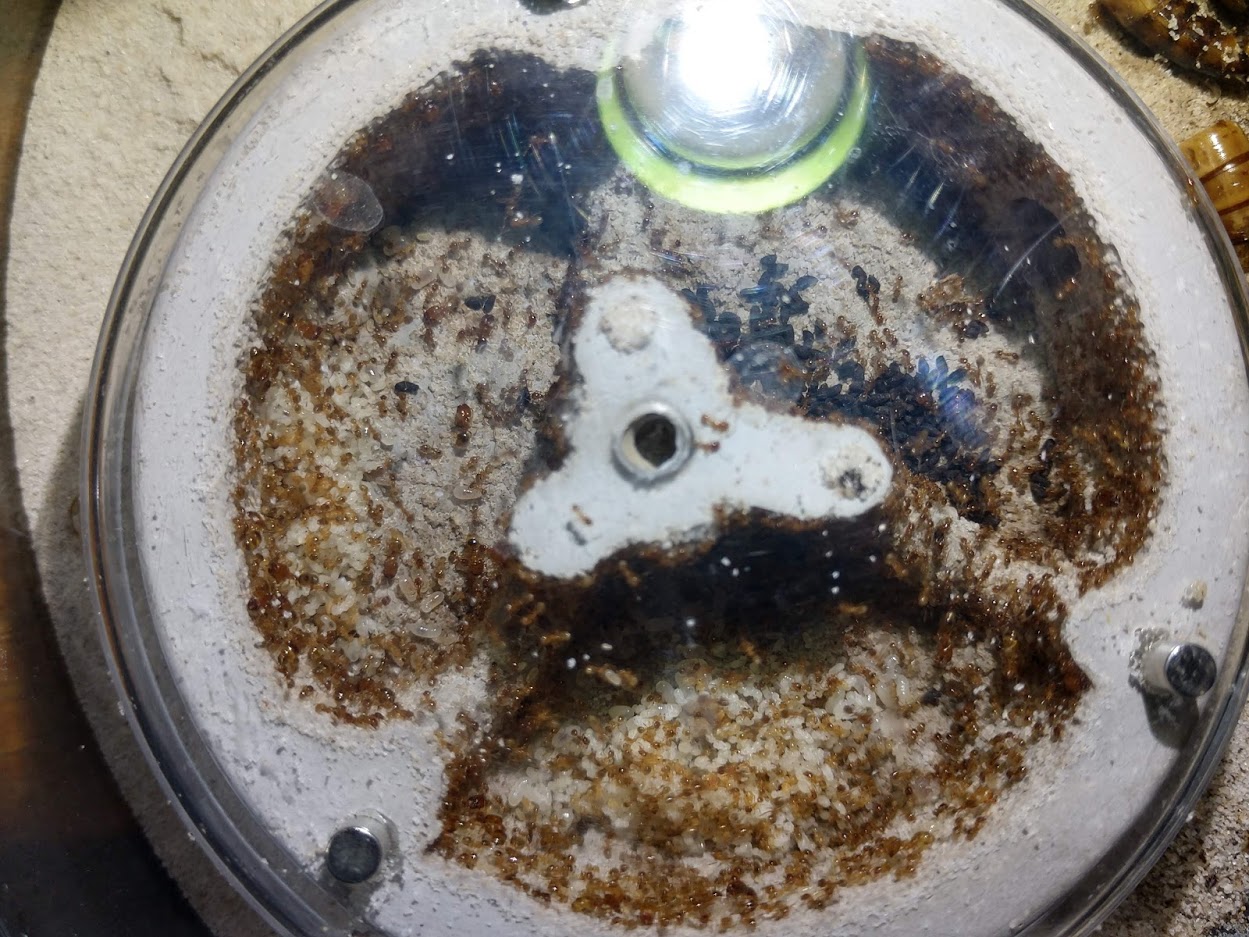
And here's a video of them eating some termite alates. Their feeding response still absolutely blows my mind.
Pheidole pilifera
The classic cool Pheidole species, and they definitely live up to it. I got this colony in April of this year with around 30 workers and 1 major. They are definitely the slowest growing Pheidole that I've kept, but it's still a very respectable rate. They now have easily a few dozen workers and around a dozen majors, with more eclosing all the time. This colony should hopefully begin to really take off soon.
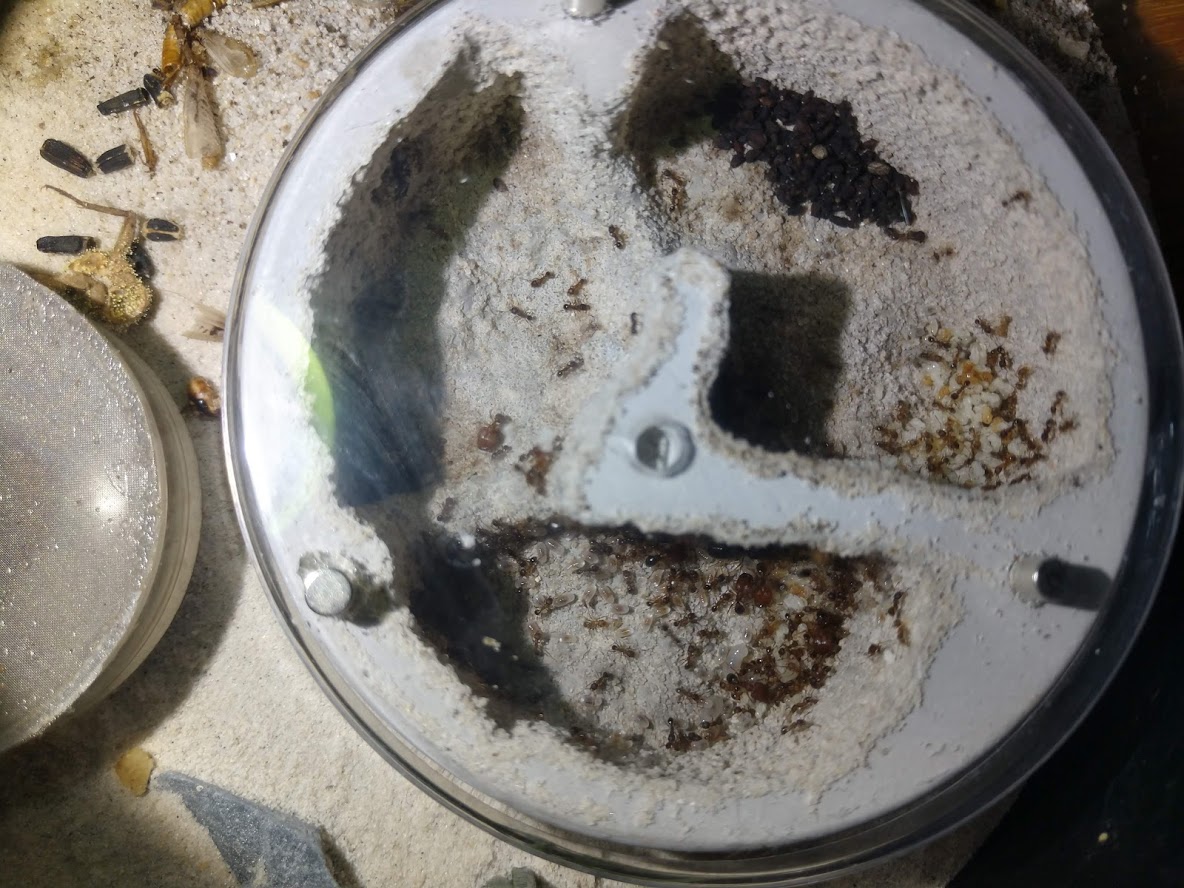
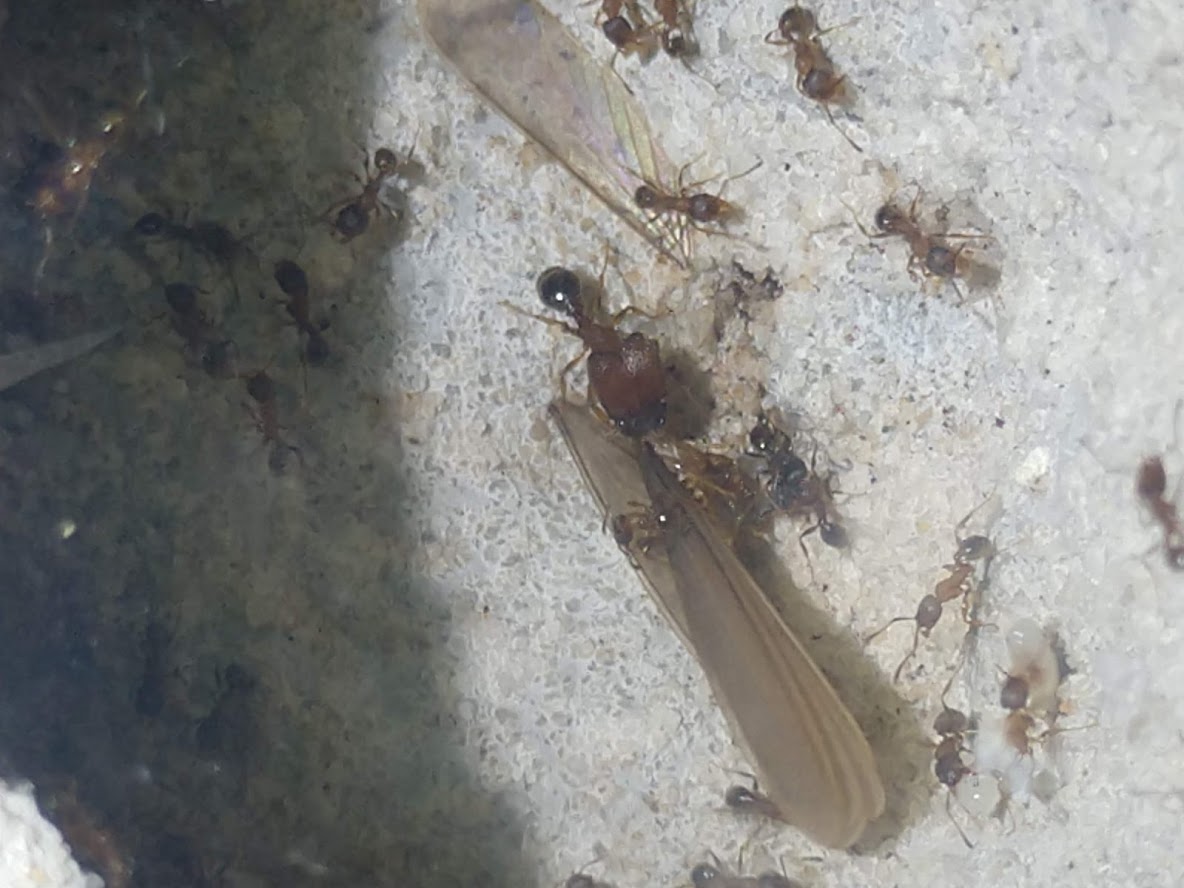
Pheidole gilvescens furtiva
Another very tiny species of Pheidole, with the queens being just marginally larger than my P. micula. I currently have 4 dealates and a few more alates that I got at my blacklight. So far they seem very promising, with most of the current dealates shedding their wings within just minutes of capture. These are still all just founding queens, but hopefully due to their small size they'll get workers relatively quickly.
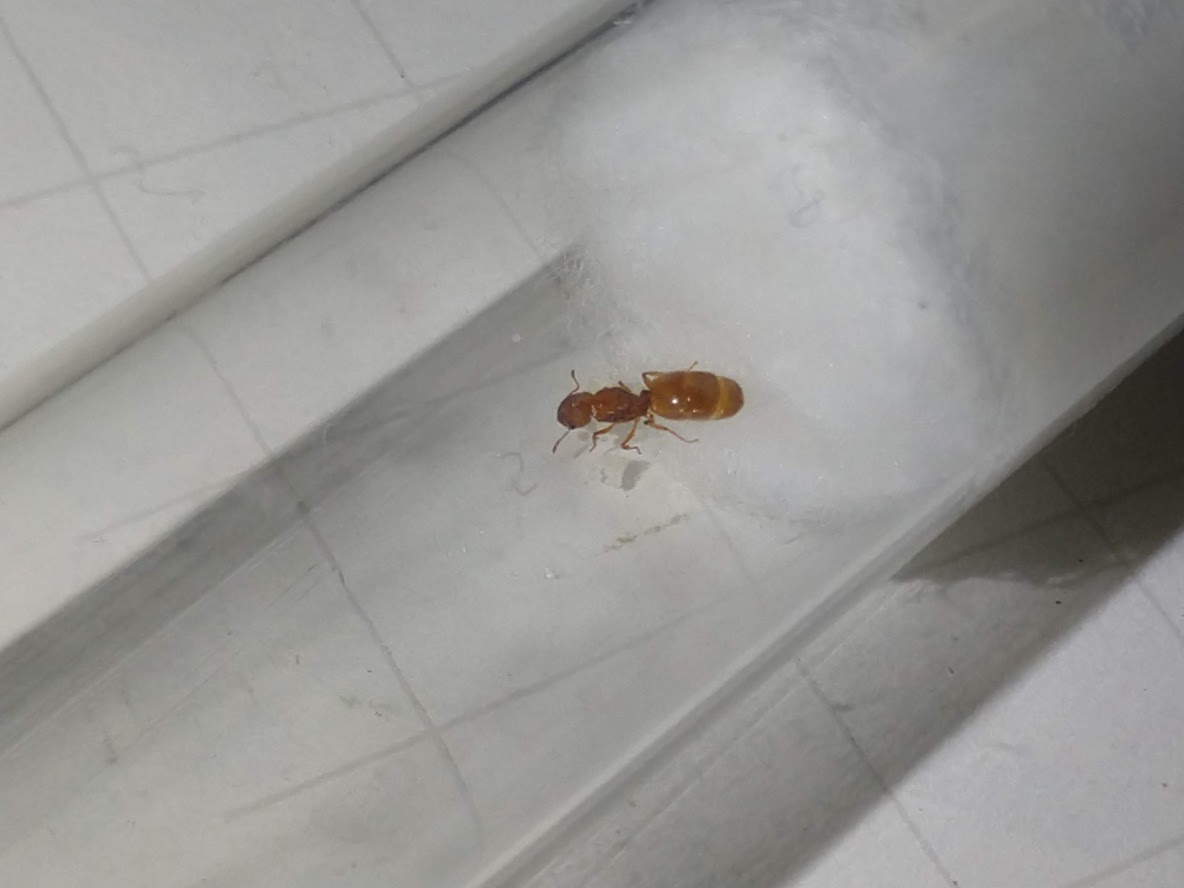
Pheidole vistana perpilosa
A very large species of Pheidole, with the queens being around 8-9mm. Mine is a bit on the smaller size, but still very good. I caught her while she was mating at my blacklight, so I've got high hopes. So far she's got a nice batch of eggs going.
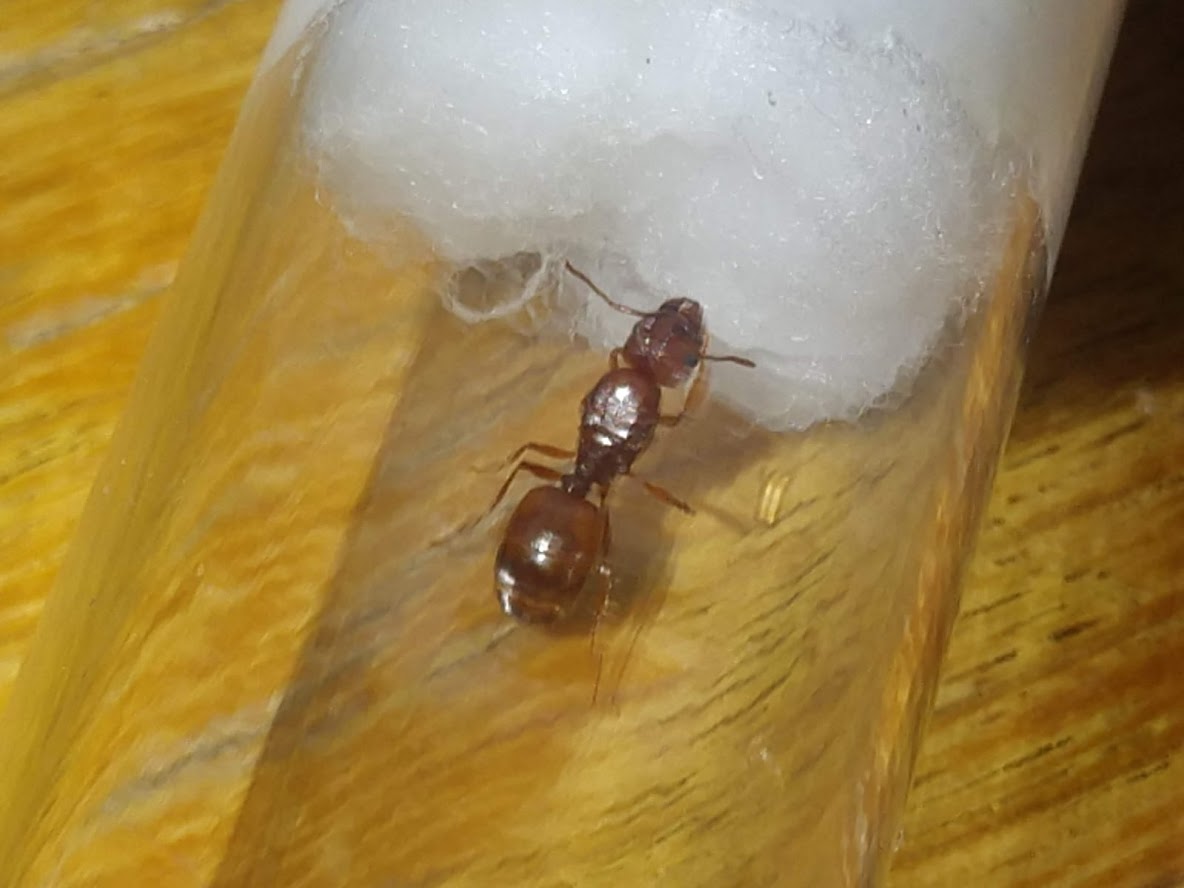
Pheidole hyatti
Another large orange Pheidole, and a sister species of P. vistana. I caught 9 of these queens at my blacklight one morning, but only two have shed wings and show signs of fertility, as both flew to the blacklight while mating. I let a buddy who had accompanied me that morning keep one, and I have the other fertile one. So far she also has a very nice pile of eggs.
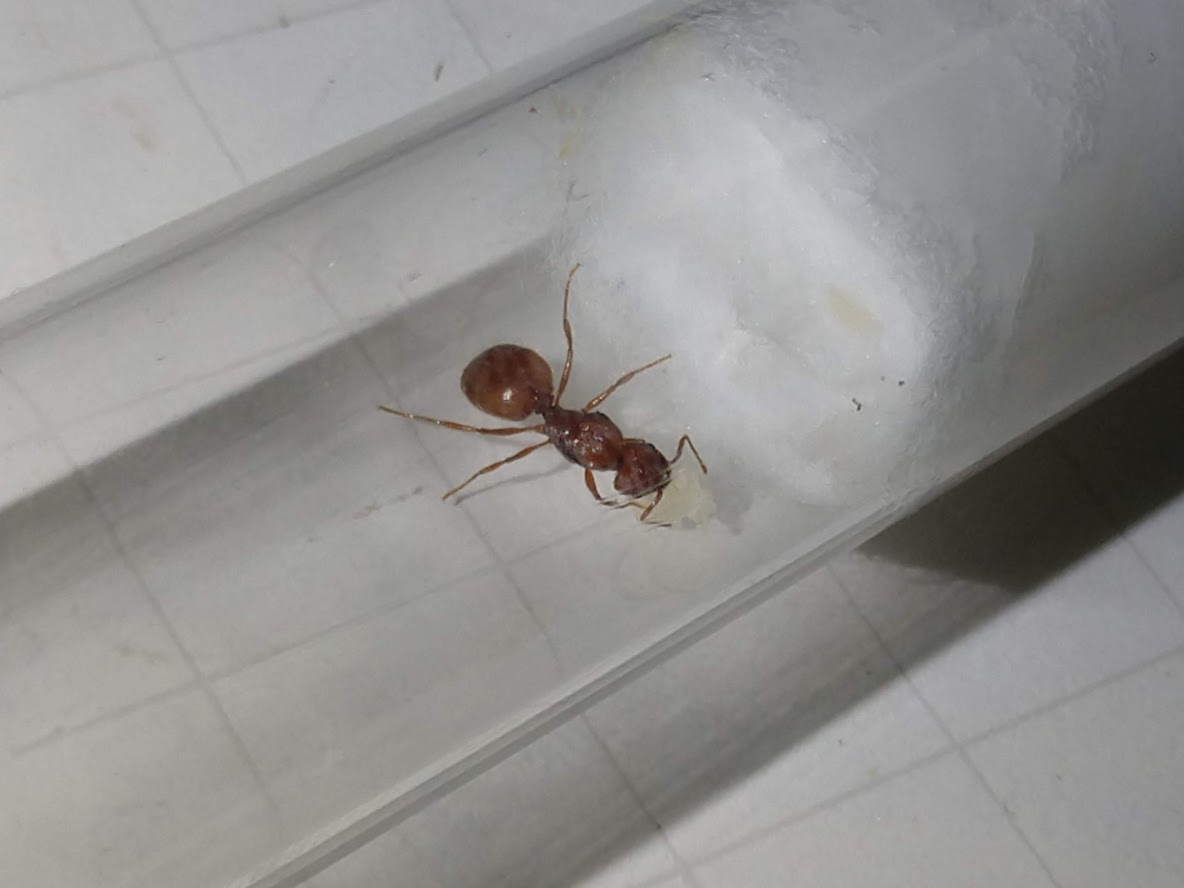
Pheidole vallicola
Currently I have several dealates of this species that were all caught on different nights. They seem relatively unassuming, being just another ~5mm Pheidole, although their black coloration does interest me, as most of the Pheidole that I've been catching are orange. I'll definitely be interested in their progression past founding.
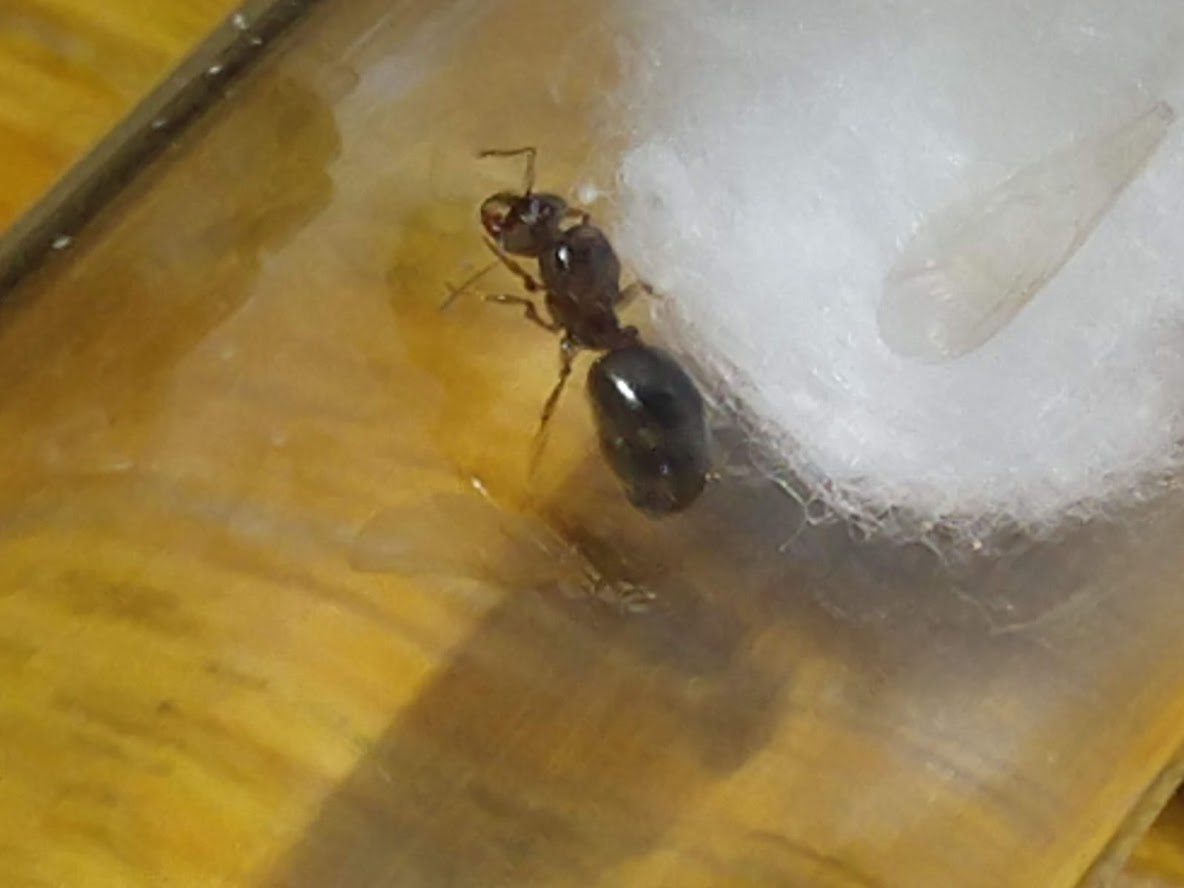
Pheidole cerebrosior spadonia
I had originally caught a dealate queen of this species on a trip to Tucson, however she died within just a few hours of capture. I was glad though to have found yet another dealate on my second trip to the area. This species seems fairly interesting, with the queen being pretty stocky overall.
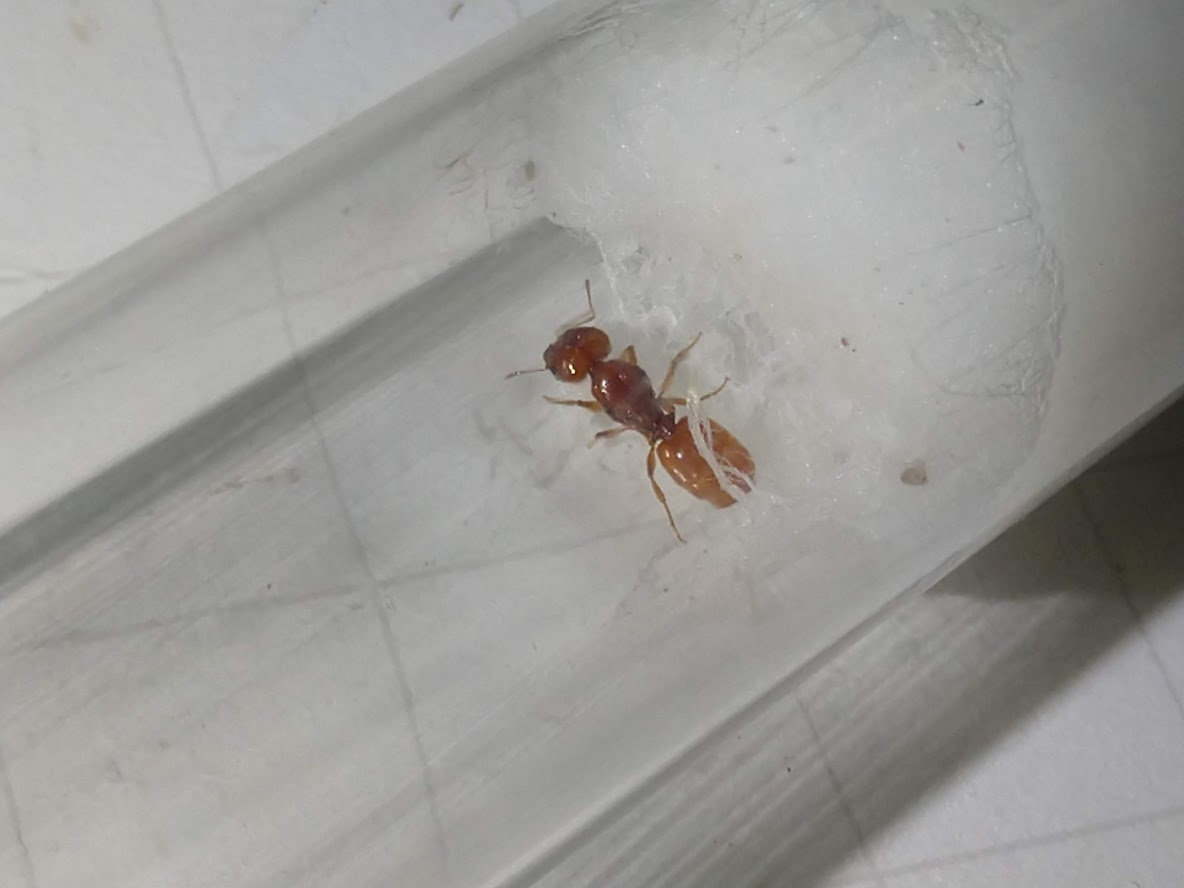
Pheidole obtusospinosa
Easily the coolest species on this list. Not only is the queen 1cm long, but these guys are also trimorphic, meaning someday I'll be seeing real, actual supermajors. Currently the colony is quite small, with around 20 workers and 1 major, however once I start feeding them more they should take off pretty good. Their test tube is pretty scuffed, so expect pics later down the line once I get them into a nest. Here's a pic of the queen when she was founding, for now.
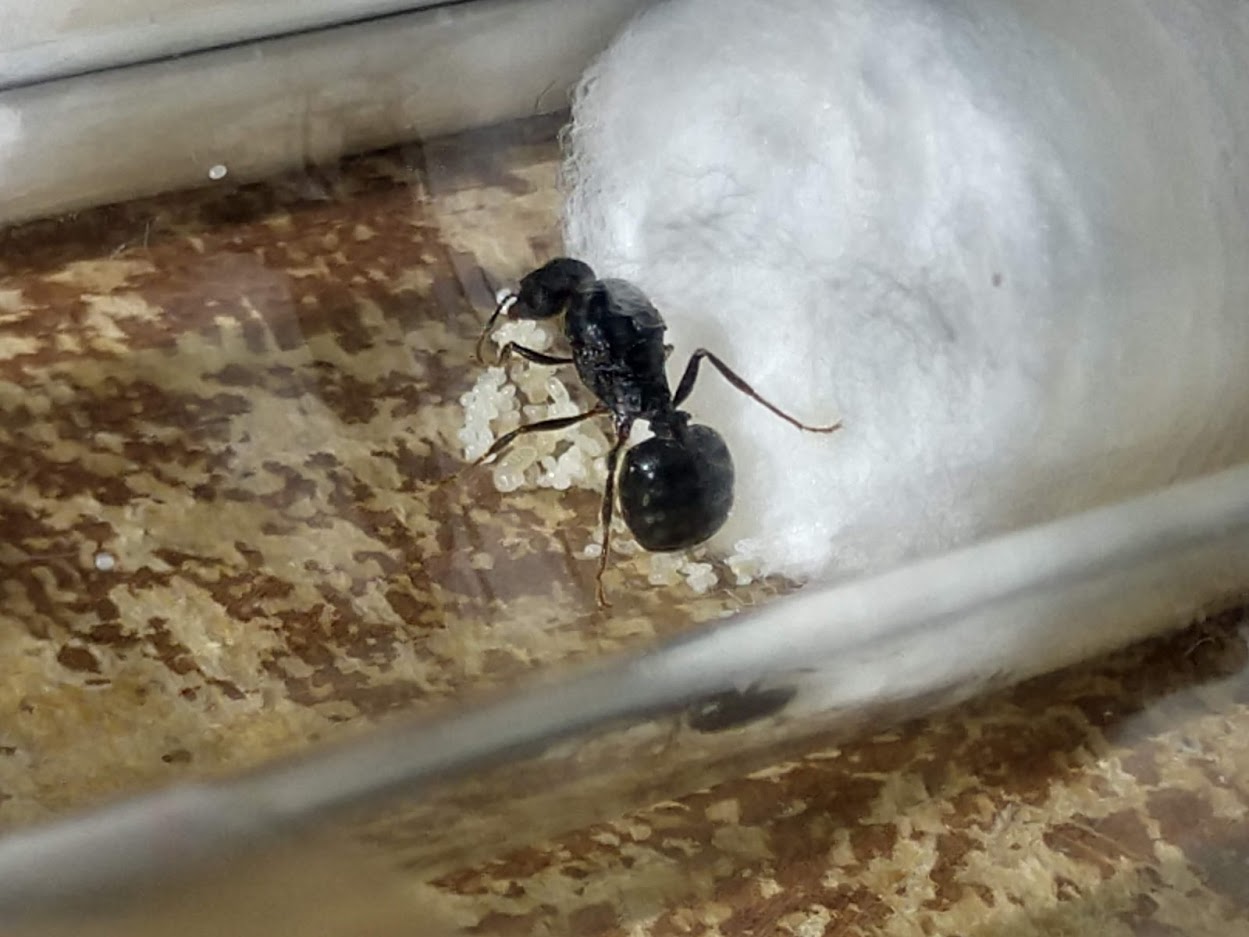
Pheidole xerophila
This is easily the prettiest species on this list. The queens are around 7mm and absolutely gorgeous. This was the first species to have flights in my area, so 3 of 4 dealates that I collected have larvae at this point. I'm very excited to see how these guys end up developing. Antwiki says that this species has tiny colonies, with only around 300 minors and 30-40 majors, however I am positive I saw much larger colonies than that when they were flying. Each colony had 5 or more nest entrances and they made huge landing pads, so I'd estimate the wild colonies had at least 1000-2000 workers, as there were quite literally more than 300 at the surface during their flights. I suppose I'll just need to wait and see how my colonies turn out.
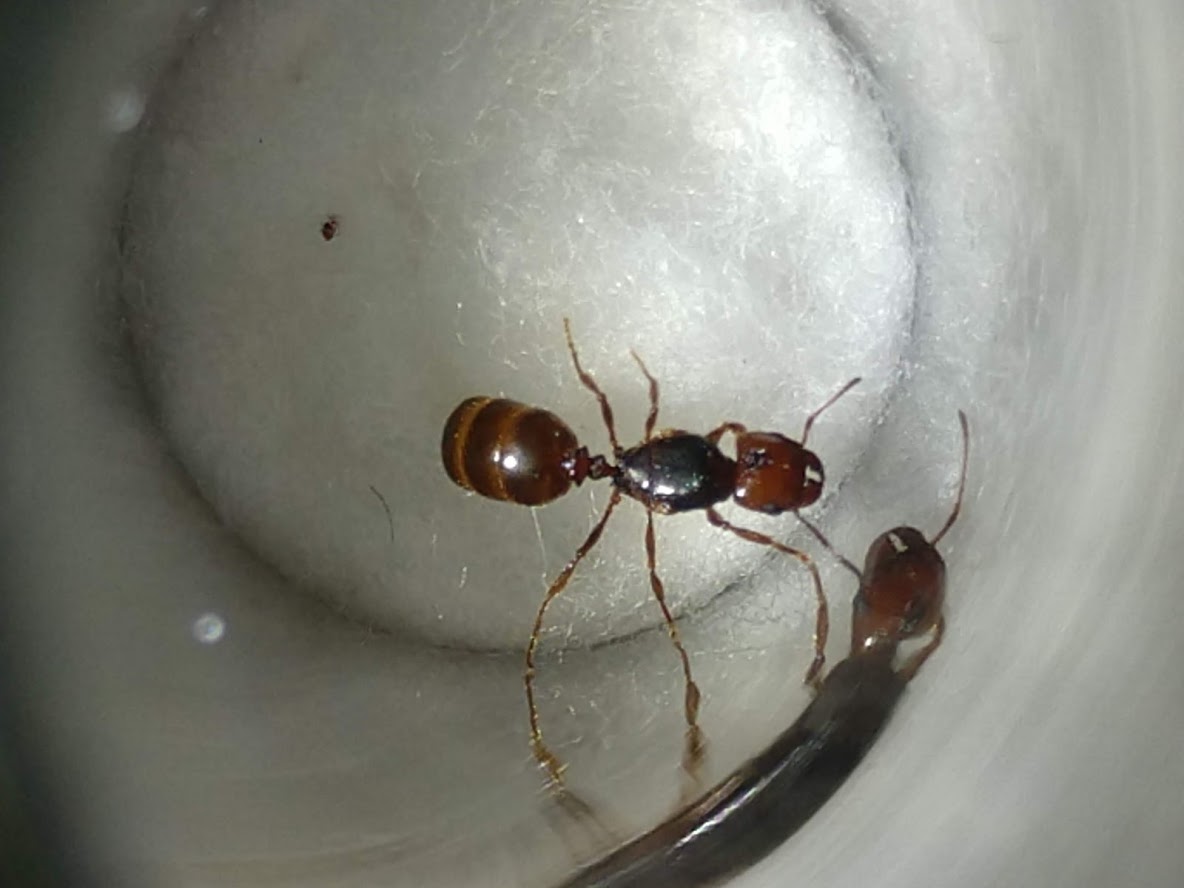
Pheidole sp.
A small, unidentified queen of mine. I have no idea what species she is, just that she's around 4.5mm and has a nice pile of eggs. I have no idea what to expect from her, so she should be pretty interesting to see develop.
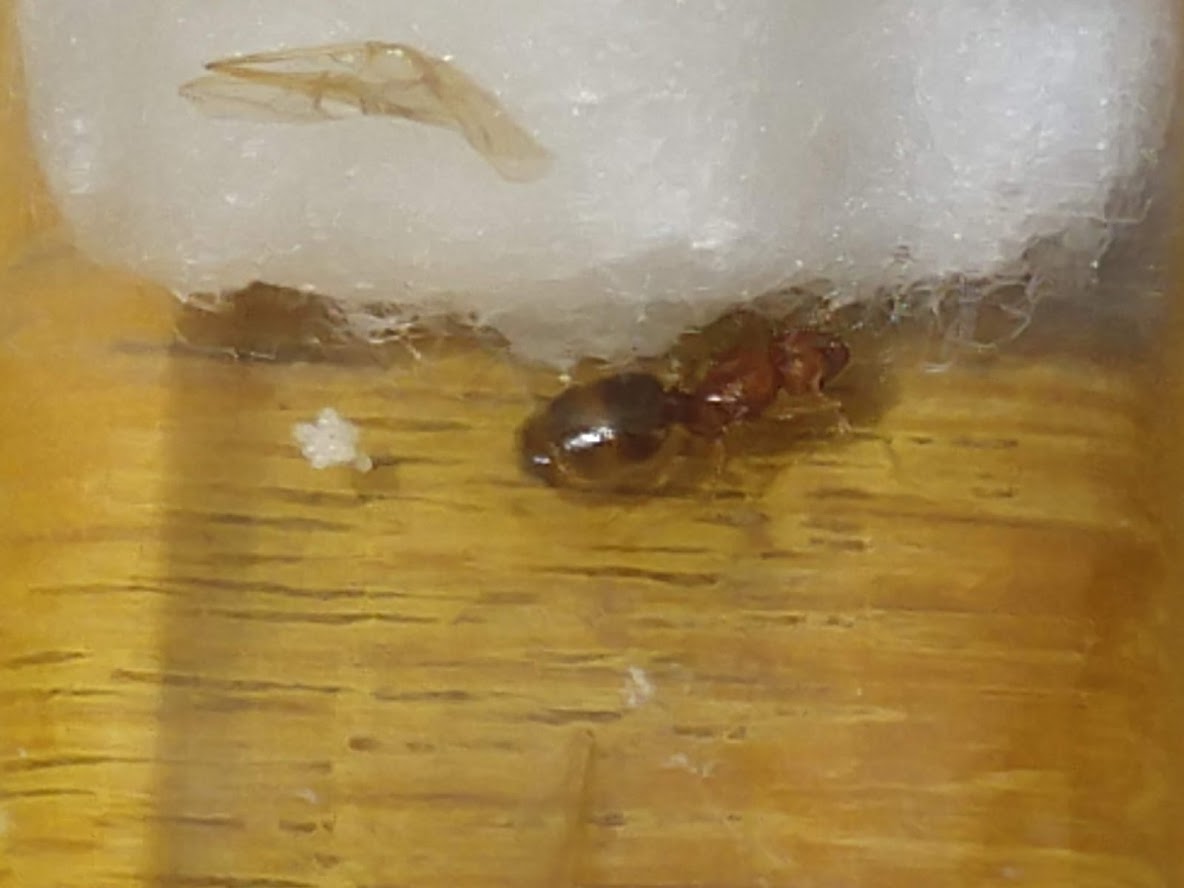
I'm... honestly not sure if this is even every species I have. I hope I'm not forgetting anyone. Either way, I'll be sure to update this journal a bunch, especially once my new queens start getting workers.
Edited by CheetoLord02, May 8 2021 - 11:33 AM.











